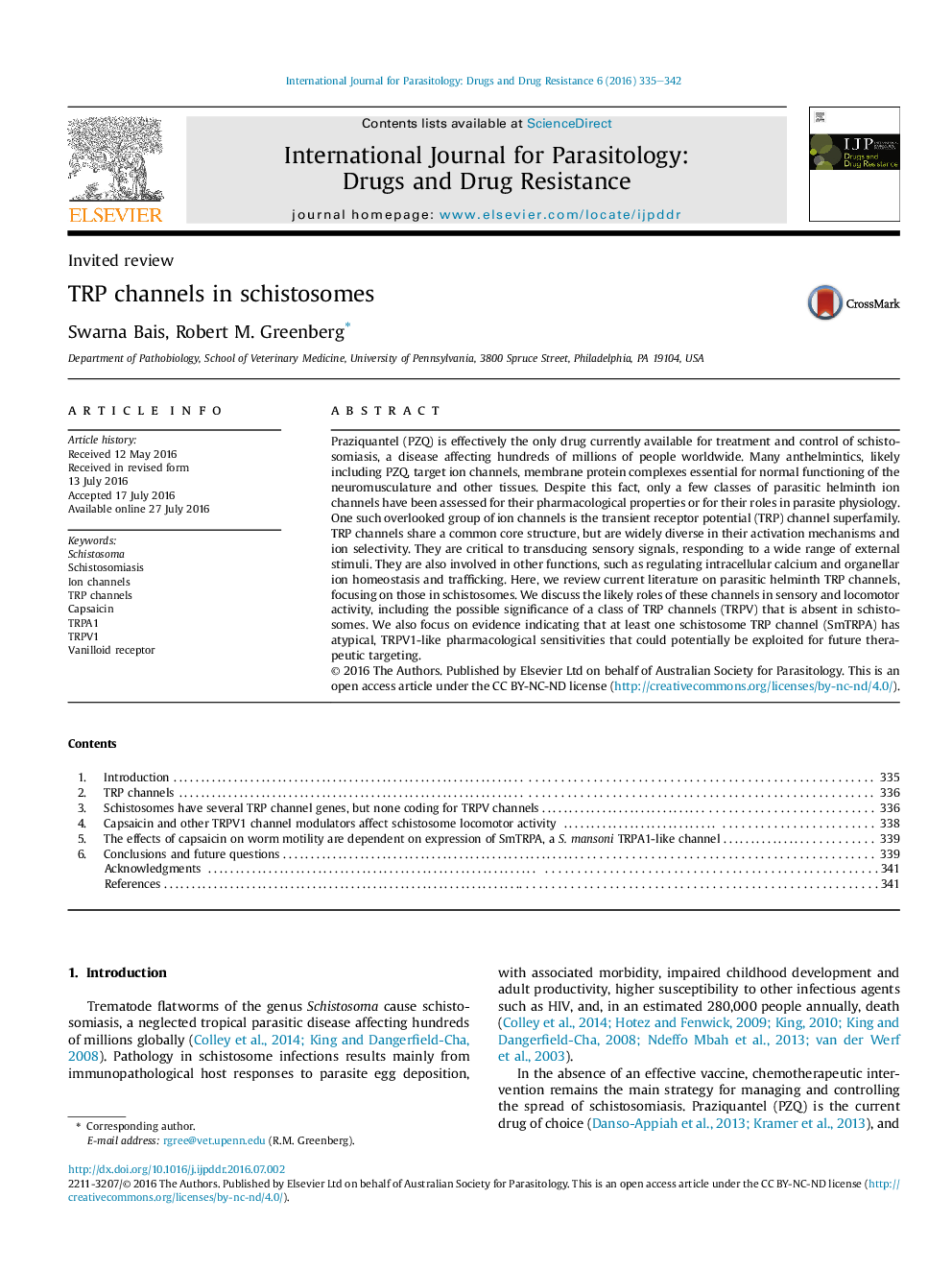| Article ID | Journal | Published Year | Pages | File Type |
|---|---|---|---|---|
| 6481773 | International Journal for Parasitology: Drugs and Drug Resistance | 2016 | 8 Pages |
â¢We provide an overview of transient receptor potential (TRP) channels in schistosomes and other parasitic helminths.â¢TRP channels are important for sensory signaling, ion homeostasis, organellar trafficking, and a host of other functions.â¢Very little work has been done on TRP channels in parasitic helminths.â¢TRPV channels, found throughout the Metazoa, appear not to be present in parasitic platyhelminths.â¢TRP channels in schistosomes appear to have atypical pharmacology, perhaps an entrée for therapeutic targeting.
Praziquantel (PZQ) is effectively the only drug currently available for treatment and control of schistosomiasis, a disease affecting hundreds of millions of people worldwide. Many anthelmintics, likely including PZQ, target ion channels, membrane protein complexes essential for normal functioning of the neuromusculature and other tissues. Despite this fact, only a few classes of parasitic helminth ion channels have been assessed for their pharmacological properties or for their roles in parasite physiology. One such overlooked group of ion channels is the transient receptor potential (TRP) channel superfamily. TRP channels share a common core structure, but are widely diverse in their activation mechanisms and ion selectivity. They are critical to transducing sensory signals, responding to a wide range of external stimuli. They are also involved in other functions, such as regulating intracellular calcium and organellar ion homeostasis and trafficking. Here, we review current literature on parasitic helminth TRP channels, focusing on those in schistosomes. We discuss the likely roles of these channels in sensory and locomotor activity, including the possible significance of a class of TRP channels (TRPV) that is absent in schistosomes. We also focus on evidence indicating that at least one schistosome TRP channel (SmTRPA) has atypical, TRPV1-like pharmacological sensitivities that could potentially be exploited for future therapeutic targeting.
Graphical abstractDownload high-res image (172KB)Download full-size image
